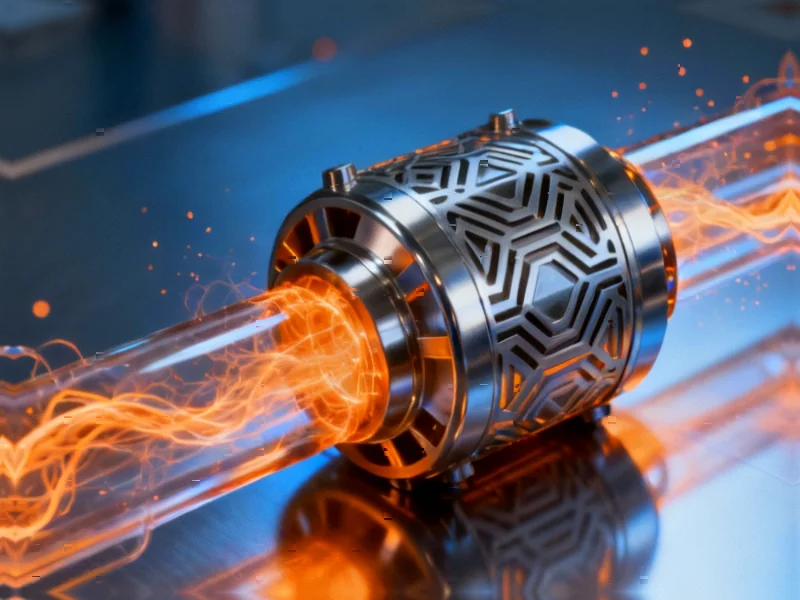Breakthrough in Perovskite Solar Cell Stability
Researchers have developed an innovative approach to combat one of the most persistent challenges in perovskite solar cell technology: iodide ion migration. This degradation mechanism has long limited the commercial viability of perovskite photovoltaics, but a new composite barrier strategy shows remarkable promise in extending device longevity while maintaining high efficiency.
Table of Contents
Understanding the Iodide Migration Problem
Perovskite solar cells suffer from inherent instability due to the movement of negatively charged iodide ions from the perovskite layer to the carrier transport layer. This migration occurs through two primary mechanisms: diffusion, driven by concentration differences across the interface, and drift, caused by built-in electric fields. At the perovskite/HTL interface, both forces typically work in the same direction, accelerating iodide loss from the active layer., according to technological advances
Through sophisticated analysis using time-of-flight secondary ion mass spectrometry and X-ray photoelectron spectroscopy, scientists discovered that applying a reverse bias could establish a dynamic equilibrium. This balance between diffusion and drift effectively confines iodide ions within the HTL depletion region, preventing their escape from the perovskite structure.
Quantifying the Barrier Energy Requirements
The research team made a crucial discovery: different perovskite compositions require specific barrier energies to prevent iodide loss. For FAPbI-based devices, they calculated a requirement of 0.911 eV, while other compositions showed varying thresholds. This quantification provided the foundation for developing a practical solution that could work under normal operating conditions.
The Composite Barrier Strategy
Since solar cells cannot function under constant reverse bias, researchers engineered a clever alternative combining multiple protective layers:, according to industry news
- HfO scattering layer: A 1.5 nm thick atomic-layer-deposited HfO layer that reduces iodide diffusion by 30-50% through ion scattering effects
- Ordered dipole monolayer: Self-assembled CF-PBAPy molecules creating a directional electric field
- Optimized HTL: PVK with Co(III)TFSI doping to maintain efficient charge extraction
The HfO layer serves as an initial barrier while allowing charge carriers to tunnel through unaffected, as confirmed by time-resolved photoluminescence measurements showing unchanged carrier transport dynamics., according to additional coverage
Creating the Perfect Electric Field Barrier
The CF-PBAPy molecule proved particularly effective due to its electrostatic potential distribution. With higher electron density at the terminal fluorine and nitrogen atoms and lower density at the anchoring group, it establishes a consistent directional electric field. Kelvin probe force microscopy measurements revealed this arrangement increases the work function of perovskite films by 0.60-0.65 eV, creating the necessary potential drop to block remaining iodide ions.
“The beauty of this approach lies in its dual mechanism,” explains the research. “The HfO layer handles the scattering component while the dipole monolayer addresses the drift component, together replicating the beneficial effects we observed under reverse bias conditions.”, as additional insights
Record Performance with Enhanced Stability
The implemented design achieved remarkable results, with FAPbI-based devices reaching:
- 25.86% power conversion efficiency
- 1.167 V open-circuit voltage
- 26.10 mA/cm² short-circuit current density
- 84.90% fill factor
- Certified 25.70% steady-state efficiency
Notably, larger 1 cm² devices maintained 24.50% efficiency, demonstrating the scalability of the approach. Other perovskite compositions showed similar improvements, with steady-state efficiencies between 24.72% and 25.23%.
Long-Term Stability Validation
Accelerated aging tests under continuous illumination at 85°C revealed significantly improved device stability. After 1,500 hours of operation, devices maintained their performance characteristics, with post-test analysis confirming the effective suppression of iodide migration. The composite barrier approach represents a major step toward commercial perovskite solar cells that combine high efficiency with long-term reliability.
This research demonstrates that understanding fundamental degradation mechanisms enables the development of targeted solutions. By quantifying the exact barrier requirements and engineering a multi-layered approach to meet them, scientists have opened new possibilities for durable, high-performance perovskite photovoltaics that could eventually compete with conventional silicon solar cells on both efficiency and lifespan.
Related Articles You May Find Interesting
- Meta’s $27 Billion AI Infrastructure Bet: Inside the Blue Owl Partnership Reshap
- Digital Twin Technology Revolutionizes Dairy Farming with Open-Source Innovation
- Tech Titans Clash Over AI Regulation and Political Allegations on Social Media
- Ray Dalio’s Digital Twin: Revolutionizing Access to Financial Wisdom Through AI
- The Hidden Tech Costs of Government Shutdowns: Industrial Computing’s Silent Cri
This article aggregates information from publicly available sources. All trademarks and copyrights belong to their respective owners.
Note: Featured image is for illustrative purposes only and does not represent any specific product, service, or entity mentioned in this article.



